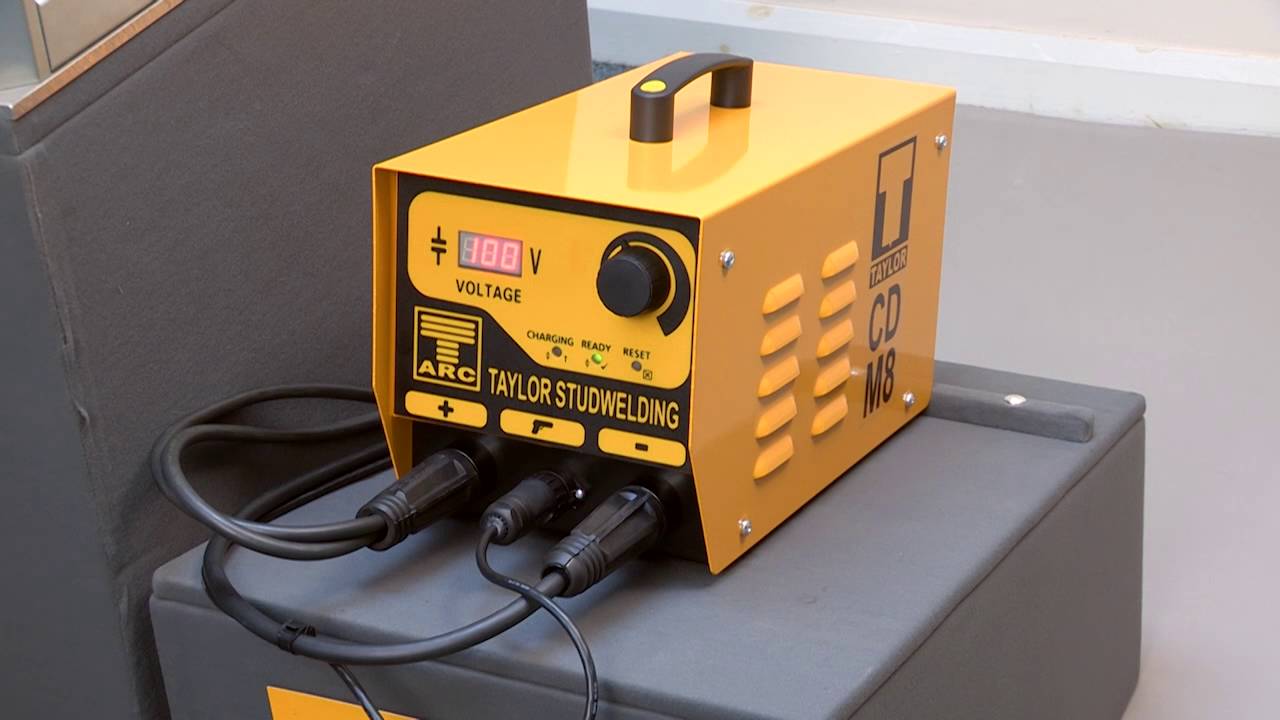
Introduction: What is a Stud Welder and How Does it Work?
A stud welder is a welding machine used to join two pieces of metal together. It utilises an arc welder to create an electrical arc between two metal pieces and a metal stud. This arc produces heat and pressure which melts the metal, whilst driving the metal stud between the workpieces. This forms a strong bond between the top and bottom metal sheets. The stud welder is used for many applications such as automotive repair, construction, and manufacturing. It can be used to weld stainless steel, aluminium and other metals with precision and accuracy. The use of a stud welder allows for quick and easy welding jobs that are safe and efficient.
Exploring the Different Types of Stud Welders.
There are many types of stud welders available, each with its own set of features and benefits.
Arc stud welders are the most common type. They use an electrical arc to create heat and pressure, bonding the metals together using heavy duty studs. This process is utilised in industrial, heavy duty deck welding applciations.
Capacitor discharge (CD) stud welders use a capacitor to store energy. This is then released in a short burst, creating enough heat and pressure for the job. This process is ideal for thinner sheet and small studs or pins.
Short cycle stud welders offer faster welding times than other types, but need more precision when setting up for the job.
Understanding the Different Parts & Accessories for Stud Welding.
Stud welding involves using a specialised welding gun and electrodes/studs. The combination of force and electric arc heats and melts the metal parts together. To ensure the process is done correctly, it’s important to understand the different parts and accessories used in stud welding. These include welding electrodes, grounding clamps, ferrules, and tip protectors.
A complete stud welding system includes:
- a power source – for creating the electrical and welding energy, as well as controlling the welding gun.
- the welding gun or welding head – used manually or automatically for applying the weld studs.
- welding cables and connection cables – for transferring the electrical current from the mains to the welding gun via the power source.
- a chuck inserted into the welding gun to accommodate the weld stud (of corresponding size).
- weld studs suitable for your application.
- accessories to aid specific jobs, including foot assemblies for using shielding gas, ferrule grips for adding flux etc.
The Advantages of Using a Stud Welder for Your Projects.
Stud welding is an efficient and cost-effective way of joining materials. It is a fast process that produces strong welds with minimal distortion. With the help of a stud welder, one can achieve welding speed and precision that are not possible with traditional methods. Furthermore, some units are lightweight and portable. Making them easy to use in any environment and for on-site applications. Moreover, the cost per weld is significantly lower compared to other welding processes. All these advantages make stud welding an ideal choice for various projects and applications.
Step-by-Step Guide on How to Use a Stud Welder.
Stud welding is a fast and efficient way of welding. It’s used in many industries including automotive, construction, and manufacturing. This guide will provide detailed steps on how to use a stud welder safely and correctly.
- firstly, ensure the metal surface has been sufficiently prepared for the welding job.
- connect the welder to your power supply.
- connect the shield gas to the rear of the machine if applicable.
- plug the earth and gun cables into their sockets on the stud welder.
- connect the gas plug
- adjust the weld and gas purge times
- screw your chosen chuck into place in the weld pistol/gun
- insert the weld stud into the end of the chuck
- set required protrusion by adjusting the leg assembly to suit
- set required lift as per the weld gun instructions relative to the application
- Finally, always ensure the ground clamp is connected to the workpiece prior to firing any studs.
Always ensure you’re wearing appropriate PPE and there is adequate fume extraction. These are our safety tips for using a stud welder. With these steps in mind, you should be able to use your stud welder with confidence and accuracy.
Looking to buy or sell a stud welding machine?
Whether you need a CD stud welder for welding pins, or a drawn arc machine for thru-deck welding, take a look at our current stock here. New, used and refurbished stud welding equipment from industry-leading brands including Nelson, Taylor Stud Welding and Cromparc. Or, if you’re looking for someone that buys stud welders, click here to send our buying team details of your machine for a valuation.
Credit : Source Post






